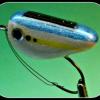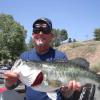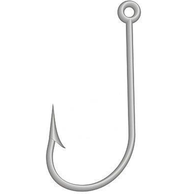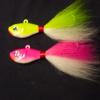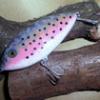Leaderboard
-
in all areas
- All areas
- Images
- Image Comments
- Image Reviews
- Albums
- Album Comments
- Album Reviews
- Topics
- Posts
- Stories
- Story Comments
- Story Reviews
- Classified Ads
- Classified Ad Comments
- Classified Ad Reviews
- Records
- Record Comments
- Record Reviews
- Websites
- Website Comments
- Website Reviews
- Status Updates
- Status Replies
-
Custom Date
-
All time
February 2 2011 - November 25 2024
-
Year
November 25 2023 - November 25 2024
-
Month
October 25 2024 - November 25 2024
-
Week
November 18 2024 - November 25 2024
-
Today
November 25 2024
-
Custom Date
11/18/2015 - 11/18/2015
-
All time
Popular Content
Showing content with the highest reputation on 11/18/2015 in all areas
-
Solar powered and battery powered vibrating fishing lures are something I’ve been working on since the late part of 2012. In this last year I finally figured out how to do the battery powered version. The difficulty with the battery powered version was figuring out how to seal the battery compartment & Motor compartment so water did not get inside. The information I am providing will give, anyone interested, a jump start on the learning curve I’ve gone through. First, before I get started, I want to tell you more about the successful testing of my lures. Over the last two years, I have had several people, some that have bought and loved my lures and others that are personal friend. They have been tested in Maryland, North Carolina, Georgia, Florida, California and in NSW Australia. They have been tested against other electronic type lures, such as the Livingston lures and a few others that use LED lights. In every case, my vibrating lures have outperformed in attracting fish. To test the lure’s fish attracting ability, I’d simply throw the different lures out and watch, with my polarized sunglasses on, to see if small bait fish would be drawn to the lure. It’s really quite amazing to see them gather around my lure as if mesmerized by the sound/vibrations. Neither of the other lures, including the Livingston lures had the same results. After I started putting legs on my lures, such as my popper and winged bugs, larger size panfish would not only be mesmerized, by the sound, they would strike. A few of my friends have told me that they have caught bass, with the battery powered versions, where bass were drawn to the lure from as far away as 50 feet. I have personally not seen this, perhaps because the waters, here in Georgia, are not so clear. Originally, my work was focused on making small, bug like, lures. I assumed fish were attracted to the sound and vibrations like they are to bugs. But, in, the most recent test, in Australia, in saltwater where visibility is up to 100 feet, a weighted jig type prototype lure was provided to test and in the words of my friend, “The fish were not only attracted, they were killing it.” So, it appears, the vibrations and sound from these motors are not only good for topwater lures, but other lures as well. My final comment before getting started is this: Even with all the testing and positive results, one fact still remains true; the lure design and look is still very important. From my experience and observations, the vibrations and noise from my lures do, in fact, provide an advantage of attracting the attentions of fish, but if the lure or the action, of the lure, does not look like something a fish would want to kill or eat, it is less likely the fish will strike. So, let’s get started: The picture below shows parts I bought and parts I made to make both the solar powered and battery powered lure versions: Solar Powered Cockroach: Purchased on eBay 1.5 ml plastic vial - Purchased on eBay Spring from a retractable ballpoint pen. Spring, handmade with 0.024” stainless wire - from Lure Parts Online Molded part for motor contact springs and motor - master part made by me, mold made with Alumilite silicone rubber and the part cast with Alumilite white and yellow die. E6000 glue for sealing the wires holes in the molded part and for lightly anchoring the motor into the molded part. There are, of course, other things made and purchased to make my master lures, my hooks, through wire, etc. I am sure these items will be explained as I continue to explain the method of making the lures. I will be posting more information on how these parts are made, shaped and used to make the motor / battery compartment of my lures. I think this is a good start to get you thinking.1 point
-
I keep score in golf by how many balls i lose... I once made it 18 holes with a dozen balls.... That was a good day!1 point
-
Man you guys are talented! Golf? LOVE it.......but completely suck at it. Pool? LOVE it......but completely suck at it. Guns? LOVE them......but I'm a horrible shot. I could go on. lol1 point
-
Look at Solarez gloss UV cured resin. It is strong, and fast. Since it is dipped (at least that's how I do it) if your swimbaits are jointed, you will have dip them before you join the pieces. I'm sure you could brush it on, and then let it hang to even out the coating. Do it inside, where the sun's light is blocked, and you can just hang you baits over the dipping container and let it drip back into the jar. It won't hurt it, as long as you keep sunlight, even reflected sunlight, away from the hanging baits, until the dripping stops and you're ready to cure them. Once they're stopped dripping, blot the last bit off the bottom with a brush, close the dipping jar and cover it, unless it's the black plastic jar my first Solarez came in, and either hang you bait in a UV nail light for three minutes, or take it out into the sunlight. It will even clear on an overcast day.1 point
-
I definitely agree with the statement[ you may need to adjust]. When you see a color wrapping around another it is to hot. Just cool it down maybe five degrees and shoot again. Controlling temp is defiantly a challenge but each person has a different way and no mater what number you shoot you will learn to tell when one is cooloer than the other or viscosity is different. I guess I just shoot it so much it is easy for me to see what is going on.1 point
-
I used to collect old sports cards. Still have a nice rookie Mays and decent rookies of Koufax and Mantle. Even thought about opening a shop at one time, but glad I didn't because that craze is virtually gone now. Also, sport and muscle cars have always been a passion of mine. Love old Challengers, Vettes, and Trans Ams. Currently have a 2000 Mustang GT that's......ummm......not so street legal. lol Nowadays, I'd have to say my latest hobby is smoking meats. Just got into it this last spring when a buddy of mine built me a 50-gallon drum. Smoke 'em if you got 'em!1 point
-
I really should read through what I type before I post. Please forgive the many typos. Hopefully you can get the gist of what I posted.1 point
-
LOL I was lost waaaaaay back when he said "Solar powered and battery powered vibrating fishing lures are something I’ve been working on" ......but it HAS been an interesting read!1 point
-
Lol, some of you guys need to seek help! 100-120 molds lol. Do any of you have any Reading molds? I have about 8 of them, don't use them. You have to use vise grip clamps to hold them together while pouring. A real pain in the butt! I'm not even sure what the sell for now.1 point
-
1 point
-
OK, for those that believe there is too much involved with the battery powered lure. I'm going to show how I do the solar powered units. There is no worry about contact springs or other molded parts. all that is needed is to have the motor compartment molded into the top of the lure. As you will see in the picture, there is a recess in the top of the lure for the solar cell to rest in. To seal around the solar cell I use a product called Apoxy Sculpt. I blend a small amount together and form it around the solar sell, thus creating a seal. Apoxy sculpt is pretty easy to form. I roll up little pieces between my finger, lay it around the edge and use a little bit of water to smooth it in place. Then I paint the lure and clear coat. In the case of the lure I show in the picture, there are some additional operations because I add the weedless hook as a secondary operation and I lay the legs in the cross groves on the bottom of the lure and a small bit of Apoxy Sculpt to hold them in place. Then I paint and clearcoat. I need to add, however, that because these lures are so small, I mold an insert out of 610 foam with one mold and place it in the other mold and pour alumilite white in that mold and press it together allow the excess resin to flow out then I quickly place the mold in the quick clamp and let is cure. You can see the lure it makes in the picture and in the other picture as well. One more thing, I show the materials I use to make mold blocks. I use precision milled poplar 1.5 inches wide by 1/4 inch thick. I find using this material is easy because the wood is perfectly square. All I do is glue to side to a base, then the other two sides can be put in place with a rubber band. If you use a good miter saw all edge will be square and there is no need to seal the edges when you pour mold materials inside. It will not leak. Doing this also assure a uniform shape of your molds making it easy to use the quick clamps. I buy the poplar wood at Home depot and I've seen it at craft stores such as Michaels and Hobby Lobby. By-the-way, I am no expert. I've developed these methods in a vacuum. Mostly I've learned things on Youtube and came up with my own methods. So, if anyone has of better ways to do things, please joint the conversation and let me know. I am always open to learn.1 point
-
The vibrations attract fish in the same way that the lip of a crank attract fish. The problem with a crank, is that to generate the vibrations, you have to pull the lure through the water at a minimum speed. The beauty of this battery operated vibrating lure, is that it can stay out there in one place. I like it and my local fishing pond is a perfect application. The pond is a concrete rectangle. Maybe 25 meters long and 10 meters wide. Down the center is an aeration pipe which drops a stream of water every couple of feet. The fish tend to gather near the aerated water and so that is where the bait must be thrown. Using a lure, you only have a casting distance of some 15 feet. After 3 or 4 turns of the handle, you are already out of the fish. Casting once a minute is going to drive the other competing anglers crazy, it is no wonder they complain and lures are banned. With a battery operated lure, I need only twitch the bait occasionally - perfect. Dave1 point
-
Thank you for your comment, Fishon-son, I don't mean to make anyone thing skill is not required. I tried but clearly didn't explain well when I stated the action and the lure design is still very important. By that I mean, you still need to work the lure. In the case of the cicada, simply letting it sit will attract fish but it is the added twitching an sporadic movement on the water that will cause fish to strike. In other words, it helps that it looks and vibrates like a cicada but it's also important to make it look distressed the same way a cicada does when it lands in the water. Basically skill is still required. You still need to find where fish are and know their habits.1 point
-
I, for one, had no idea these kinds of lures even existed! Seems with all the work involved, you'd have to ask a pretty penny for each bait? Then again, I was surprised at how low the prices were of the competitors buzzers.1 point
-
Thank you, Dieter, Regarding the concern about lacking knowledge of electronics, I too am no genius when it comes to this. I've learned a little in my quest to make my lures, but in actuality, this design has very little electrical difficulty. There are no other electronic components than a motor and a battery. Just think of the contact springs and connectors to the motor for the battery. The fact is, I labored for the longest time trying to make the lure more complicated than it had to be. I first started by trying to create an intermittent timer circuit and by trying to use a solar cell, on the lure to charge a battery. In the end, I ended up with a simple design where I designed a quick way to replace the battery and that is it. Either way, if you try to make a similar lure or not, thank you for your kind comment Michael1 point
-
@ m-vandorn I may not try to build such a lure after your kindly shared instructíons , as I'm not too smart about electronics , ......but stlll I'd like to thank you for your willingness to share your design in here , .....it's people like you making this site so extraordinary . Good luck with commercializing your design , ....best greetings , Dieter1 point
-
Electronics in such a small body is always difficult, given the additional problems of sealing. Well designed and engineered. Dave1 point
-
For you guys looking for what is probably the best epoxy its KlearKote. Costs about $60 for 2 gallons. That's the one all of us mass producers use.1 point
-
1 point


